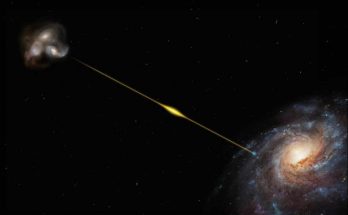Dark matter continues to confound astronomers, as NASA’s Chandra X-ray Observatory demonstrated with the detection of an extensive envelope of dark matter around an isolated elliptical galaxy. This discovery conflicts with optical data that suggest a dearth of dark matter around similar galaxies, and raises questions about how galaxies acquire and keep such dark matter halos.
Dark matter is a mysterious kind of glue that holds not only the mysterious together, but is theoretically responsible for their creation. It was originally suggested in 1933 to explain discrepancies math by calculating the mass of galaxies, essentially, more material is needed to keep the galaxies together, we can see. Since then, we have not learned a whole hell of a lot more about dark matter.
In fact, we seem to know more about this itisn’t than it is. We know there is no antimatter. We also know that there is no dark clouds of normal matter. Many physicists believe that it represents about 83% of matter in the universe – even if we still have to prove that it exists!
The tricky thing with the dark matter is that we can not be detected directly, it is invisible. Dark matter is revealed by its severity, so we have, instead of measuring it through its interaction with normal matter. Currently, there are two contradictory experiments conducted in an attempt to confirm the existence of dark matter.
The Cryogenic Dark Matter Search (CDMS) detector Sudan mine in Minnesota is the search for weakly interacting massive particles, or WIMPs, whose discovery could resolve the problem of dark matter. Although the dark matter should be everywhere, it is estimated that some WIMPs can pass through the galaxy without interacting with normal matter, making it very difficult to discover. Although scientists have not yet detected WIMPs directly, they found significant evidence that they exist.
In direct conflict with these results, the XENON100 experience in Gran Sasso Laboratory in Italy has so far yielded negative results with respect to the WIMP. This does not mean that WIMPs exist, but simply that they are harder to detect than scientists had previously assumed.
Visits: 105



